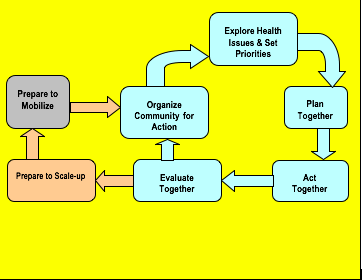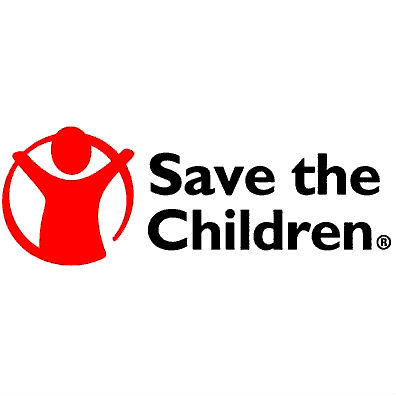
Save the Children’s Community Action Cycle
The Community Action Cycle (CAC) is a proven community mobilization approach which fosters individual and collective action to address key health program goals and related outcomes. Applied to improved health outcomes the CAC works to increase access to and demand for health services, especially where gender and other socio-cultural barriers exist. Save the Children’s CAC approach, used successfully around the world, fosters individual and collective action for sustained community participation in achieving health outcomes.
The CAC approach fosters a community-lead process through which those most affected by and interested organize, explore, set priorities, plan and act collectively for improved health. Phases in the CAC include preparing to mobilize; organizing for action; exploring the issues affecting access and demand for health and setting priorities; planning together, acting together, evaluating together, and “scaling up” successful efforts. Each Phase of the CAC has a series of related steps which guide communities and facilitating partners. As applied to health each phase and its related steps will lead to greater community ownership and sustained collective action after the end of project through the capacity-building of community groups.
By working through the CAC cycle communities and individuals will identify the socio-cultural barriers/enhancer, resources, risk factors, especially for those most marginalized, to access health services and begin to work towards positive change. They will also identify bottlenecks to accessing services—and will link with internal and external partners to address these barriers. The CAC approach recognizes that people do not change their behaviour based on information alone; it is a combination of having the information as well as the confidence and enabling environment to make positive choices, collectively and individually, while addressing underlying social norms that ultimately leads to changed behaviours.
Through the application of the CAC by multiple partners at community, district and provincial levels, community mobilization as an empowering approach to social change will:
- Increase community level decision-making required by decentralization and democratization
- Address the different needs, problem, assets, beliefs and practices of diverse communities through greater ownership and understanding
- Build mechanisms and systems through which communities can sustain an enabling environment for social change, and link effectively with education and economic systems to support themselves
- Bring additional resources that may not be available through from government or donors Apply political pressure to improve quality of health services
- Change social structures and norms in order for those most affected, especially for women and those most marginalized groups.
For a more detailed look into Save the Children’s CAC and its associated phases/steps click here
Also please view the following attachments to learn more about their measuring community capacity work:
Community Mobilization for Development– Power Point Overview of Save’s community mobilization approach based on a community capacity strengthening process
MCC for Better Health and Social Outcomes by SCUS -paper on our measuring community capacity work.
GMNC – Measuring Community Capacity – Concurrent Session – Overview of some of the indicators and measurement work presented at the Global Maternal and Newborn Health Conference last October.


